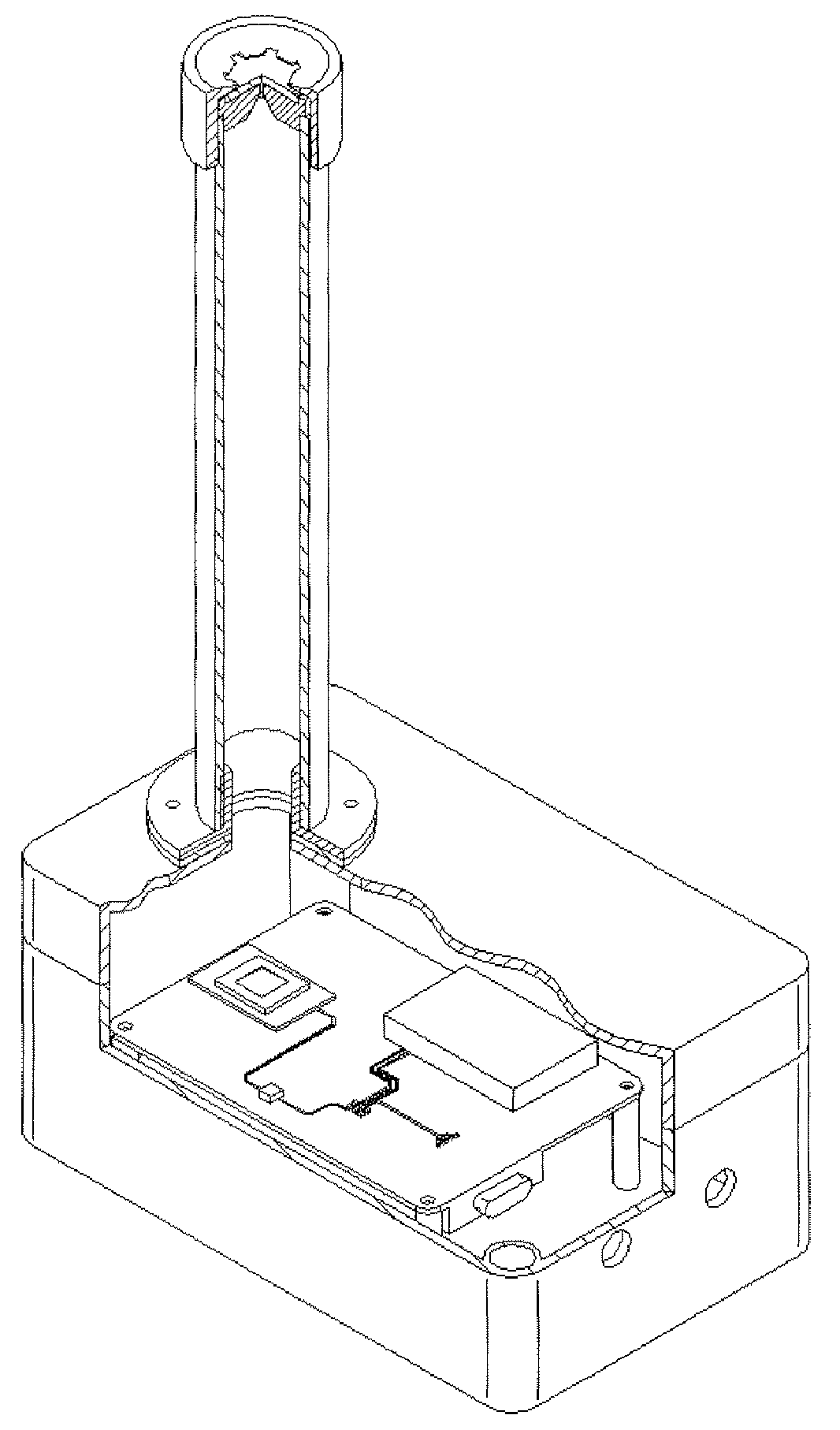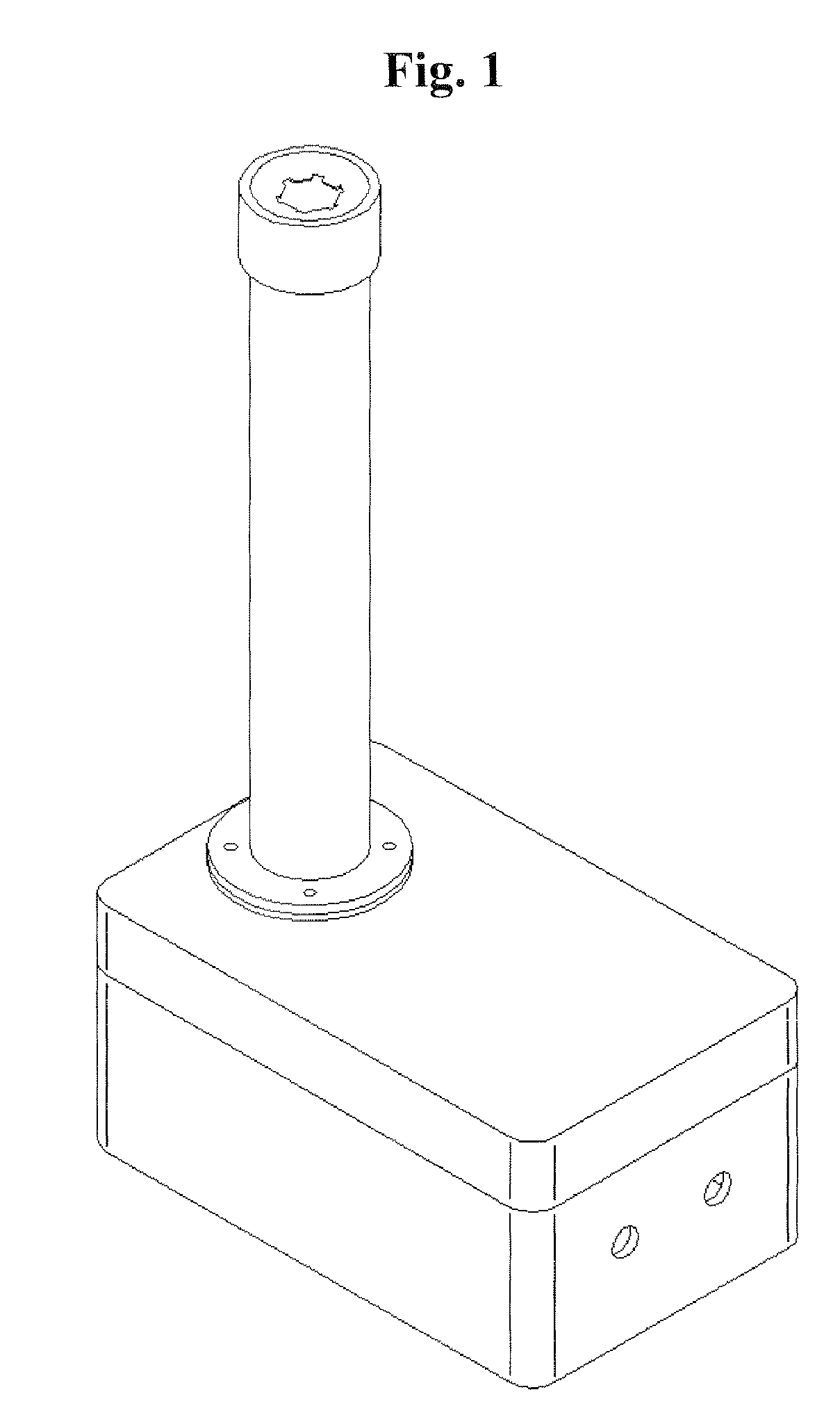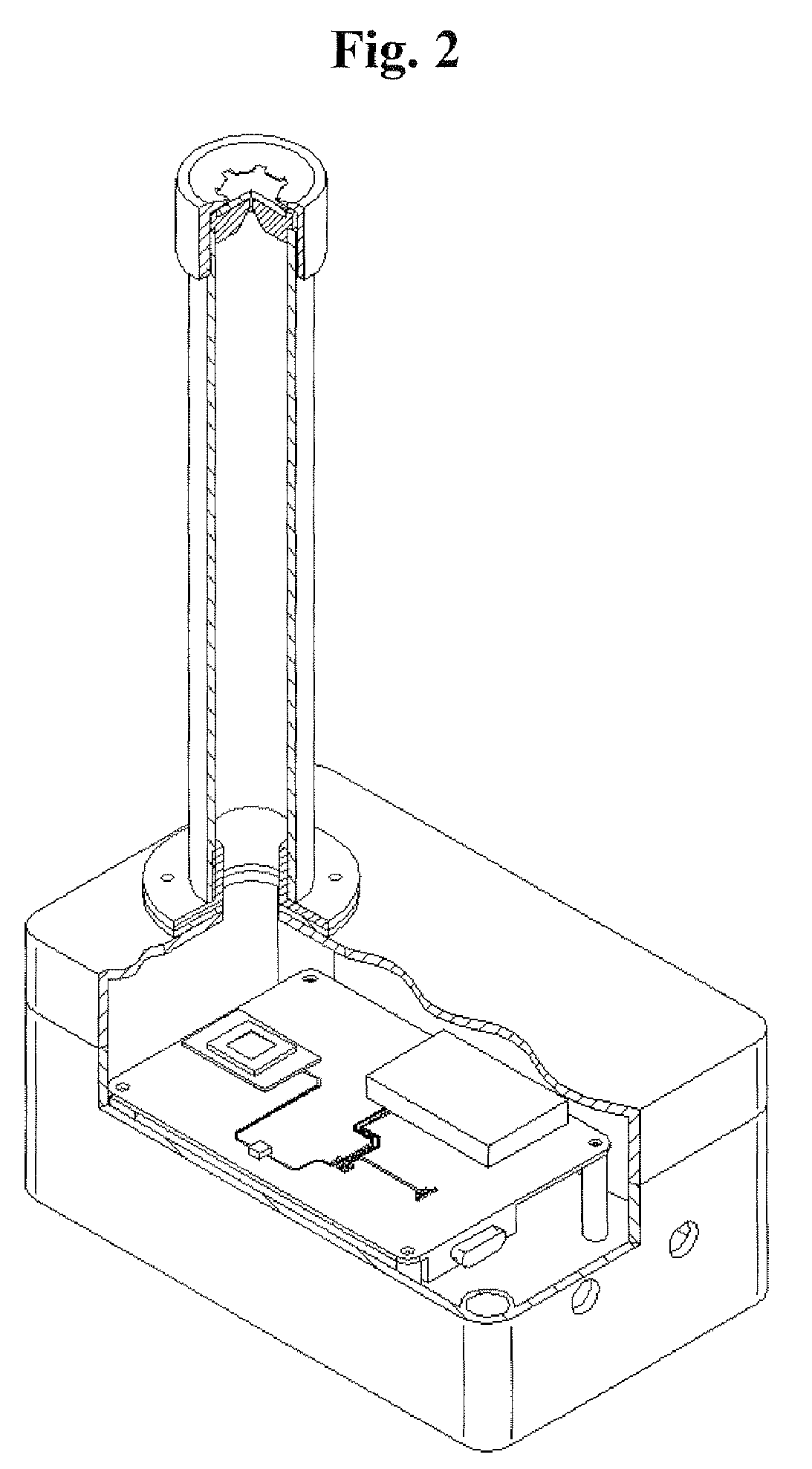Equipment and Process for Measuring the Precision of Sun Tracking for Photovoltaic Concentrators
a technology of photovoltaic concentrators and sun tracking, which is applied in the direction of navigation instruments, instruments for comonautical navigation, instruments, etc., can solve the problems of non-viability of design, difficulty in aligning these with the sun with such accuracy, and usually not very rigorous estimates
- Summary
- Abstract
- Description
- Claims
- Application Information
AI Technical Summary
Benefits of technology
Problems solved by technology
Method used
Image
Examples
Embodiment Construction
[0008]This invention relates to an electronic system for measuring the tracking precision of two-axis photovoltaic concentrators, and measurement procedures for use therewith.
Physical Description of the Pointing Sensor
[0009]Essentially the system is based on a sensor measuring precision of pointing, which is connected to the data acquisition system based on a computer.
[0010]The pointing sensor is based on a PSD (Position Sensitive Device) sensor, a monolithic optoelectronic device whose main usefulness is that it continuously measures the position of a point of light, such as that produced by the incidence of a collimated beam, on its surface. This function is achieved without the need to set up a matrix of individual sensors as in the case of CCD sensors currently used in digital image capturing systems. Use of sensors of this type for this function requires processing of all the measurements from these small cells, which ultimately slows down the rate with which measurements are t...
PUM
 Login to View More
Login to View More Abstract
Description
Claims
Application Information
 Login to View More
Login to View More - R&D
- Intellectual Property
- Life Sciences
- Materials
- Tech Scout
- Unparalleled Data Quality
- Higher Quality Content
- 60% Fewer Hallucinations
Browse by: Latest US Patents, China's latest patents, Technical Efficacy Thesaurus, Application Domain, Technology Topic, Popular Technical Reports.
© 2025 PatSnap. All rights reserved.Legal|Privacy policy|Modern Slavery Act Transparency Statement|Sitemap|About US| Contact US: help@patsnap.com



